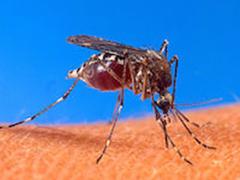Have you ever wondered how an image is seen by your eyes, and how your eyes can tell your brain what they are seeing? Learn all about how your eyes and brain work together to show you the world.Also in: Español | Français
- Home
- Activities
-
Stories
- World of Biology
- Meet Our Biologists
- Listen and Watch
- PLOSable Biology
-
Embryo Tales
- All About Autism
- Xs and Ys: How Our Sex Is Decided
- When Blood Types Shouldn’t Mix: Rh and Pregnancy
- What Is the Menstrual Cycle?
- Understanding Intersex
- Twin Tales
- The Mysterious Case of the Missing Periods
- Summarizing Sex Traits
- Shedding Light on Endometriosis
- Periods: What Should You Expect?
- Menstruation Matters
- Investigating In Vitro Fertilization
- Introducing the IUD
- How Fast Do Embryos Grow?
- Helpful Sex Hormones
- Getting to Know the Germ Layers
- Gender versus Biological Sex: What’s the Difference?
- Gender Identities and Expression
- Focusing on Female Infertility
- Fetal Alcohol Syndrome and Pregnancy
- Ectopic Pregnancy: An Unexpected Path
- Creating Chimeras
- Confronting Human Chimerism
- Cells, Frozen in Time
- EvMed Edits
- Stories in Other Languages
- Images
- Links
- Contact
- About
Biology Stories
Explore the world of biology and meet some of our biologists. Here you can learn about the living world and find out what is so cool about biology that someone would do it for a living. Pick a story to read or listen to one of our podcast shows filled with guest scientists who share their experiences and passion for discovery.
Humans think about food... A LOT. Our mouths might water thinking about the taste of pizza or a big salad or our favorite fruits. But how, exactly, does taste work?
Also in: Français
We start off as a single tiny cell, and yet somehow we are born as whole humans. Get to know the stages of that process and how quickly we develop.
Cancer is a disease that affects a lot of people. But there are still many things that scientists don’t understand about it. The goal of this experiment was to see how stem cells are involved with the growth and spread of cancer cells.
Searching for things on the Internet can be like hunting for a needle in a large haystack. Just how large is the Internet?
When was the last time you folded a piece of paper to make a fun shape? Maybe you made a paper plane or tried origami to make a swan. Believe it or not, the building blocks inside your body also need to fold into the right shapes to work properly. In this activity, you can build your own protein channel from paper.
An interview with biophysicistGerry McDermott of the National Center for X-ray Tomography. Dr. Biology tours the synchrotron that is also called the giant monster. Dr. Biology learns how the football sized facility is used to power a new kind of microscope.
West Nile virus is spread by mosquitoes and becomes more common in humans during the summer months. Is there a connection between the feeding habits of mosquitoes and the spread of the virus to humans?
We usually worry about getting sick from other people or from spoiled food. But did you know that some animals, like rats and mongooses, can make you sick too?
Whether in the sands of the desert or the ice of Antarctica, viruses play a larger role in our ecosystems than you might realize. Arvind Varsani searches for these viruses, studying them in all kinds of habitats across the globe.
We hear the word ecosystems in the news and at school but just what are ecosystems? It turns out there are lots of ecosystems. You might even learn you have some inside you!
Also in: Français | Español | 中文 | українською | عربى
Do you notice when your brother or sister take stuff from your room? Even if they put it back, you can still see those small differences. Scientists are studying what part of your brain is responsible for seeing those kind of changes.
Have you ever wondered what makes one animal different from another? Scientists conducted an experiment and found that food is one of the reasons chimpanzees and humans are so different.
Embark on a journey through the buzzing world of grasshoppers and locusts with Dr. Biology. In this episode, biologists Rick Overson and Mira Word Ries, from the Global Locust Initiative at Arizona State University dig into the world of these insects. The three delve into the methods of swarm prevention, from the intriguing "doughnut diet" that influences migratory behavior to the critical role of soil and crop management in making fields less welcoming to these insects. Rick and Mira bring to light the importance of global cooperation and the need for a unified attack against locust invasions that spare no border.
The past can be hard to remember, so how can we go about studying it? Indiana Jane takes us on a tour of humans from the past, ancient microbes, and the bioarchaeologists that study them both.
Also in: Español
You hear that space is the final frontier, but could we have another frontier right here on Earth? The microscopic world offers a limitless opportunity to explore amazing places and life forms. You just need the right tool for the trip – a microscope. Guests Angela Goodacre and Doug Chandler have a conversation with Dr. Biology about the instruments that let us journey into inner space.
If the world of fashion were to choose the most fabulously colored animals they would likely decide upon butterflies and birds. These animal fashion statements are well known to most people, but what is less clear is how and why these bright colors have evolved in the animal world.


























